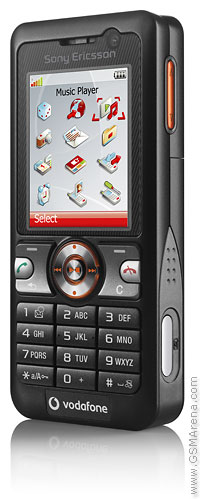Sony Ericsson V630 Full Specs Features Pros & Cons Unveiled

Introduction to Sony Ericsson V630
The Sony Ericsson V630 is a mobile phone that was announced in May 2006 and quickly became a preferred choice for many mobile enthusiasts. It was discontinued as newer models emerged, but at the time of its release, it featured an array of functionalities that made it stand out in the mid-range segment of feature phones. This article details the different aspects of the Sony Ericsson V630, including its design, specifications, capabilities, and some of the technological contexts of its time.
Design and Body
The Sony Ericsson V630 was crafted to appeal to users looking for a compact and portable device. Its dimensions were 102 x 45.7 x 16.9 mm, making it a device that comfortably fit in the palm of your hand. Weighing in at just 91 grams, it was quite lightweight. The design incorporated a Mini-SIM slot, which was the most common SIM size at the time. Aesthetically, it was offered in a sleek 'Vibrant Black' color, providing a classic and professional look.
Display
The device featured a TFT display with support for 256K colors, which was quite impressive for a feature phone during its release period. The screen measured 1.9 inches with a resolution of 176 x 220 pixels, providing adequate clarity and color vibrancy for viewing images and text. With a screen-to-body ratio of approximately 24.4%, it focused on compactness rather than expansive screen real estate.
Camera Features
On the camera front, the Sony Ericsson V630 was equipped with a 2-megapixel main camera allowing users to capture decent quality photos and videos. While not on par with today's smartphone cameras, it still provided a level of utility for capturing memories on the go. The device also included a VGA camera for video calls, a forward-thinking feature for its time, paving the way for what would become a staple in future mobile devices.
Performance and Memory
Running on a feature phone OS, the Sony Ericsson V630 was not built to compete with smartphones but instead focused on offering solid basic functionalities. It came with 10MB of internal storage, which was expandable via a Memory Stick Micro (M2) slot, supporting up to 2 GB of additional storage. This storage capability was quite significant considering the era, giving users plenty of space to store contacts, messages, and some multimedia content.
Network and Connectivity
The Sony Ericsson V630 supported GSM and UMTS technologies, allowing for connection on both 2G and 3G networks. This dual capability ensured that users could access faster data speeds up to 384 kbps, making it suitable for browsing and basic data usage. While lacking WLAN and positioning connectivity, it supported Bluetooth 2.0 with A2DP for wireless audio streaming and data transfer. The absence of a 3.5mm jack was a minor inconvenience, but it helped keep the design sleek.
Battery Life
Equipped with a removable Li-Ion battery, the Sony Ericsson V630 offered a decent battery life for its operations. It could last up to 350 hours on standby under both 2G and 3G conditions, with a talk time of 7 hours on 2G networks or 2 hours and 30 minutes on 3G. The removable nature of the battery also meant that it could be easily replaced, extending the useful life of the device as battery performance naturally degraded over time.
Sound and Multimedia
In sound, the V630 offered a loudspeaker and supported a variety of alert types, including vibration, downloadable polyphonic tones, MP3, and AAC ringtones. Though it lacked a 3.5mm headphone jack, the device ensured a decent audio experience through wireless Bluetooth devices or through adapters.
Software and Features
As a feature phone, the Sony Ericsson V630 included several useful applications like SMS, EMS, MMS, Email, and Instant Messaging for robust communication options beyond voice calling. The browser supported HTML and had an RSS reader for simple web navigation, considering the data limits of its time. Java support via MIDP 2.0 allowed for app installation beyond the pre-installed ones, including downloadable games.
Market Impact and Legacy
During its time, the Sony Ericsson V630 served as a bridge in the evolution from feature phones to smartphones, providing features that pre-empted some of the expectations from more modern devices. Especially with its focus on multimedia and communication capabilities, it attracted users who valued these aspects. The V630 serves as an important historical model that highlights the significant transitions in mobile technology.
Sony Ericsson V630 Key Features
- Supports both GSM and UMTS technology for wider network compatibility.
- Equipped with a 2 MP main camera and a VGA front camera for video calls.
- Compact and lightweight design with dimensions of 102 x 45.7 x 16.9 mm and a weight of 91 g.
- Expandable memory with Memory Stick Micro (M2) up to 2 GB.
- Bluetooth 2.0 with A2DP for wireless audio streaming.
- HTML browser with NetFront and RSS reader support for online browsing.
- Java support with MIDP 2.0 for enhanced gaming and application capabilities.
- Long standby time of up to 350 hours on both 2G and 3G networks.
- Variety of messaging options including SMS, EMS, MMS, Email, and Instant Messaging.
- Removable Li-Ion battery for easy replacement.
Sony Ericsson V630 Main Disadvantages
- Discontinued model, limited support and availability.
- Small display size of 1.9 inches with a low screen-to-body ratio (~24.4%).
- Low screen resolution of 176 x 220 pixels (~148 ppi density).
- Limited internal memory of only 10MB.
- Maximum expandable memory limited to 2GB using Memory Stick Micro (M2).
- No 3.5mm audio jack for standard headphones.
- Lack of WLAN capability.
- No GPS positioning support.
- Absence of FM Radio.
- Shorter battery life on 3G—with up to 2 hours and 30 minutes of talk time.


View Also
More Phones
All Rights Reserved +13924 Phones © Mobilawy 2025

























